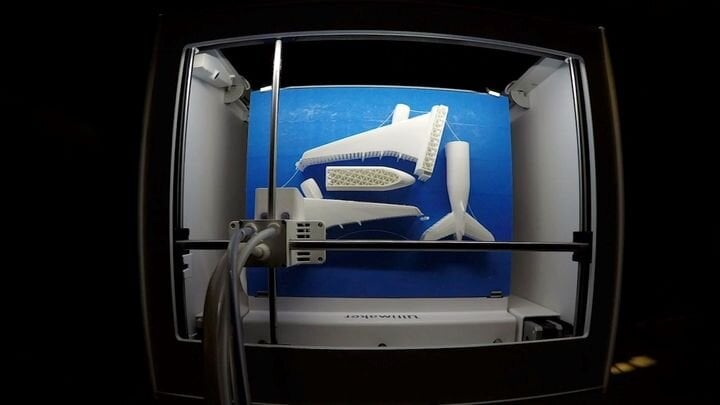![3D printing possibilities for British Airways [Source: BA]](https://fabbaloo.com/wp-content/uploads/2020/05/image-asset_img_5eb08c2f2144b.jpg)
Charles Goulding and Preeti Sulibhavi review an unexpected announcement from British Airways regarding their future use of 3D printing technology.
As a surprise gift to the 3D Printing Industry British Airways (BA) issued a press release this month describing its top 10 predictions for air transportation 3D printed production items.
Many of the categories are focused on customer experience and interior cabin items, and appear eminently 3D printable. The complete list is as follows:
-
Cutlery
-
Products for amenity kits, such as toothbrushes or combs
-
Tray tables
-
Aircraft windows
-
In-flight entertainment screens
-
Seats
-
Baggage containers
-
Circuit boards for electrical components
-
Flight deck switches
-
Aircraft shells
The first two items were cutlery and amenity kit items that presumably would be 3D printed in plastic, for security reasons. Three of the items from tray tables, to entertainment screens and seats were part of our recent article on driverless cars, where we indicated that future EV car seats are expected to function similarly to airplane seating.
The British Airways piece also contained additional futuristic concepts including 3D printed pharmaceuticals for jet lag and customized food and beverages based on individual passenger nutritional needs.
One overall theme for the British Airways airplane 3D printing list items is emission reduction from both lighter parts and reduced transportation activities from flying replacement airplane parts and supplies across the globe. A recent article described the time savings and transportation cost savings from 3D printing blockchains related to aerospace parts.
At the very least the British Airways list will stimulate many discussions and place an emphasis on products that improve customer experience. This will bring another important champion to the 3D printing arena.
The Research & Development Tax Credit
Enacted in 1981, the now permanent Federal Research and Development (R&D) Tax Credit allows a credit that typically ranges from 4%-7% of eligible spending for new and improved products and processes. Qualified research must meet the following four criteria:
-
Must be technological in nature
-
Must be a component of the taxpayer’s business
-
Must represent R&D in the experimental sense and generally includes all such costs related to the development or improvement of a product or process
-
Must eliminate uncertainty through a process of experimentation that considers one or more alternatives
Eligible costs include US employee wages, cost of supplies consumed in the R&D process, cost of pre-production testing, US contract research expenses, and certain costs associated with developing a patent.
On December 18, 2015, President Obama signed the PATH Act, making the R&D Tax Credit permanent. Since 2016, the R&D credit can be used to offset Alternative Minimum Tax (AMT) or companies with revenue below $50MM and, startup businesses can obtain up to $250,000 per year in cash rebates that can be applied to payroll taxes.
Conclusion
The British Airways 3D Printing Holiday List for 3D Printing is thought-provoking, but for the airline industry and many other industries with similar characteristics, it is particularly gratifying to see the focus on the customer experience from a highly regarded global brand.
Via BA

